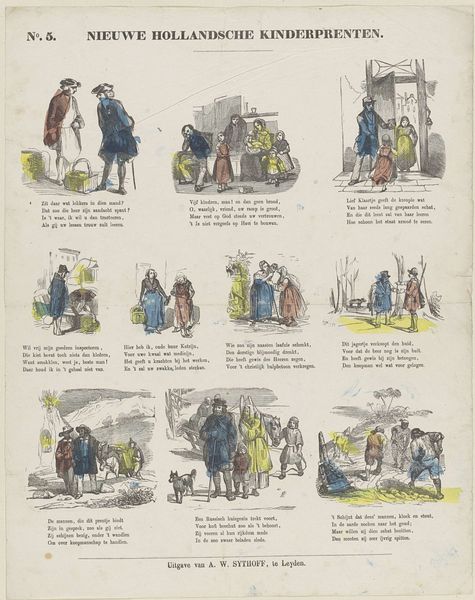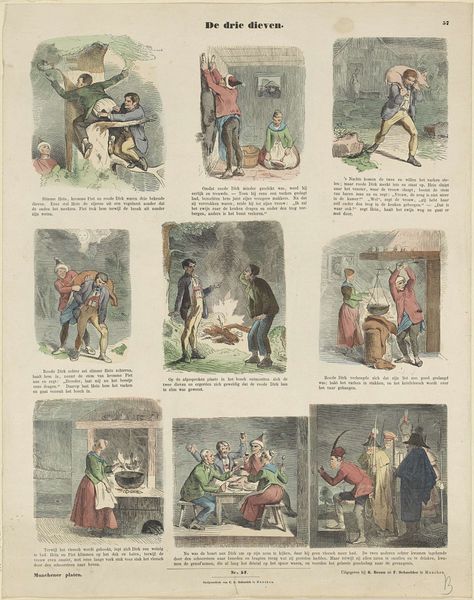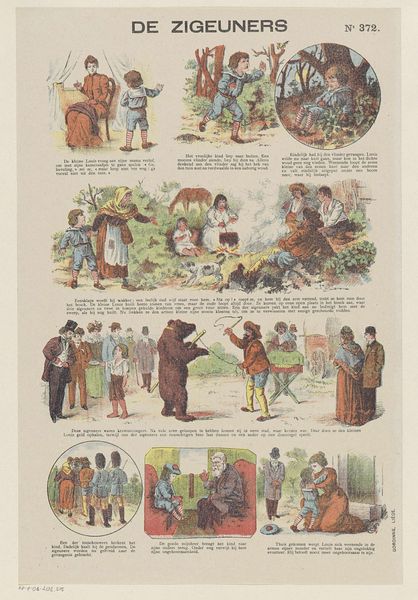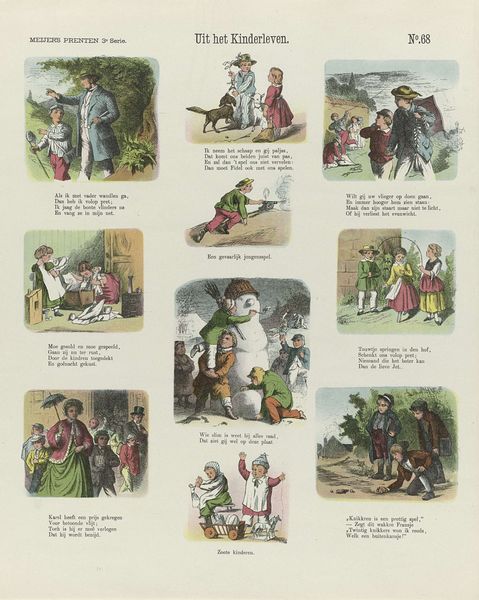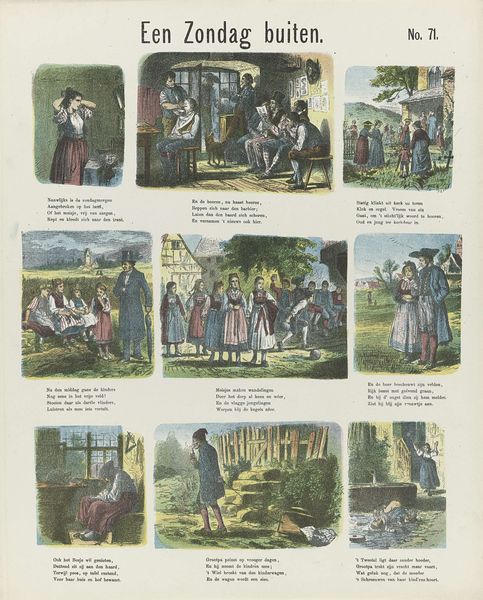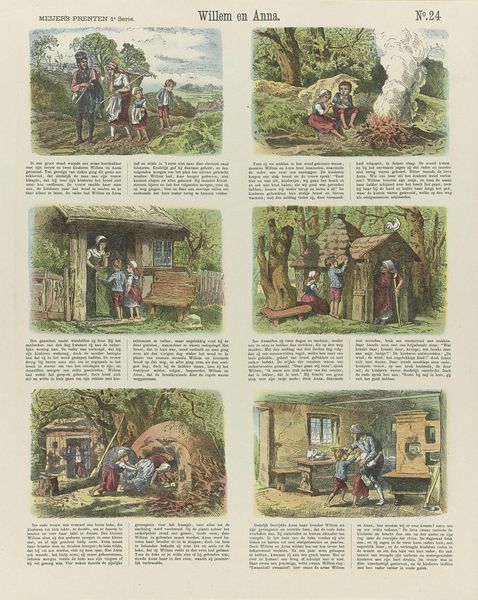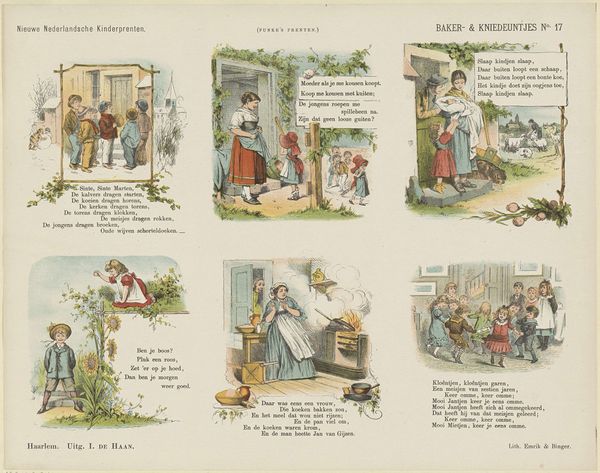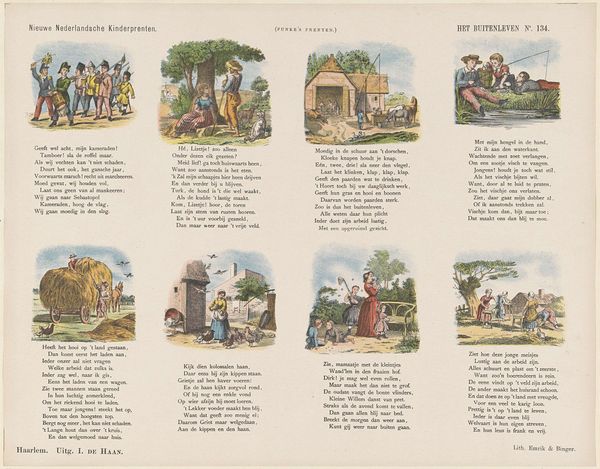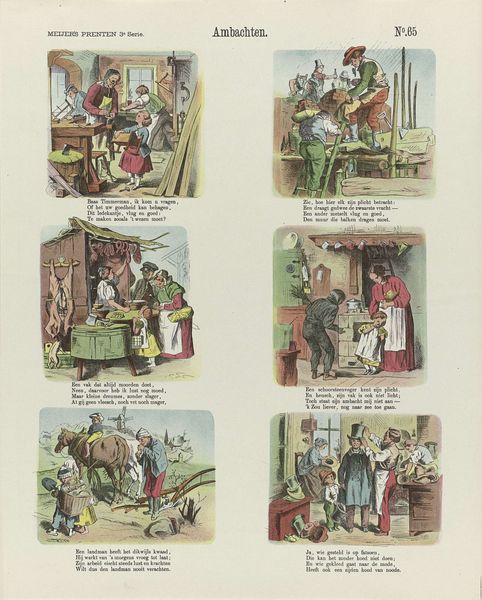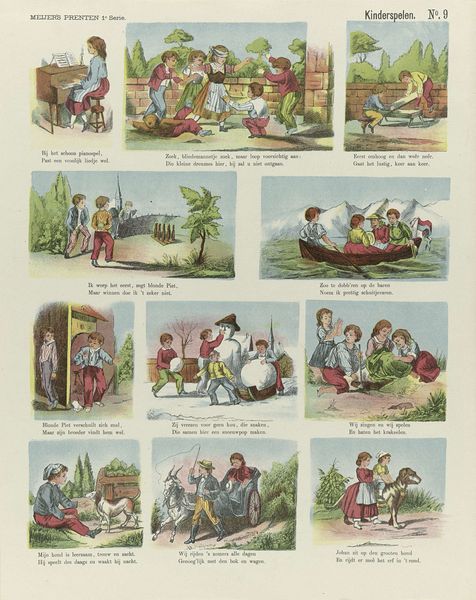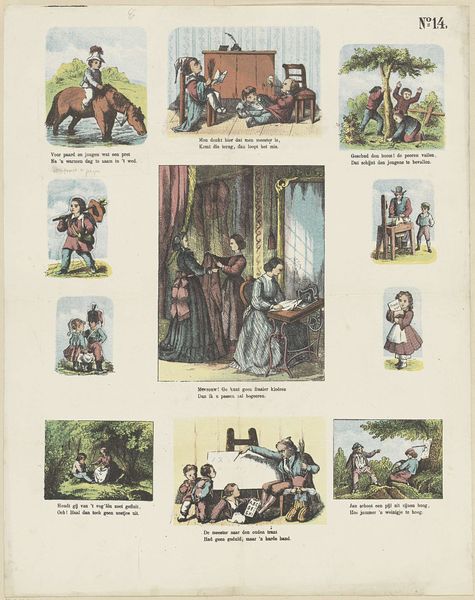
print, watercolor
#
narrative-art
# print
#
watercolor
#
child
#
folk-art
#
watercolour illustration
#
genre-painting
Dimensions: height 428 mm, width 347 mm
Copyright: Rijks Museum: Open Domain
Curator: What a striking piece of narrative art. This watercolor print, entitled "Gestrafte Hoogmoed," which translates to "Punished Pride," dates back to 1878 and is attributed to De Ruyter & Meijer. Editor: It gives the impression of an antique children’s book illustration; its series of small sequential scenes creates a storybook feeling. The colors, though muted, add a certain warmth. Curator: The sequence, with its blend of domestic scenes and outdoor escapades, provides a lens onto 19th-century values and what was thought acceptable or unacceptable for children at that time. I find that fascinating, to study our cultural assumptions reflected so plainly in such a simple art form. Editor: Definitely. Pride is represented through misbehavior of a boy who thinks too much of himself, then depicted as being quite literally punished—thrown into water by geese, covered in mud, left standing alone, et cetera. I wonder, what are we meant to think? Do we admire the child by the final scenes, or laugh? Or is the objective perhaps to instill values? Curator: The symbolism resonates with age-old anxieties around hubris and the need to keep oneself properly aligned within a community. Look, there's even the implication that animals can sense and respond to human transgression, acting as enforcers of natural order, which goes to deeper, mythic levels of understanding behavior. Editor: It certainly brings forward strong sentiments through visual means—not a straightforward moral lesson. But then, consider how these folk images function—not solely as individual pieces, but as part of a broader popular visual culture designed to shape viewers' understandings. Curator: And these visual constructs remain so revealing. The power of these simple prints in expressing these moral narratives persists. Editor: It encourages reflections not only on pride itself, but about art’s purpose.
Comments
No comments
Be the first to comment and join the conversation on the ultimate creative platform.

